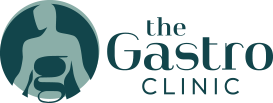Diverticulitis
Overview
Diverticulosis is a common digestive disease which involves the formation of pouches within the bowel wall. Diverticulosis typically occurs within the large intestine, or colon, although it can occasionally occur in the small intestine as well. Many times food can become trapped in these pockets making it a breeding ground for bacteria. Diverticulitis results when one of these diverticula becomes infected or inflamed. Peritonitis may occur if the infected or inflamed pouch ruptures. When this happens, immediate surgery is required.
causes of diverticulosis
- The chance of developing diverticulitis increases with age.
- Being obese increases your chances of Diverticulosis
- Smoking
- Lack of exercise
- Foods with high fats and low in fiber
- Certain medications, i.e. steroids, opiates and anti-inflammatory drugs (Advil, Motrin IB and Aleve).
symptoms of diverticulosis
The most common symptom of diverticulitis is a pain on the lower left side of the abdomen that can appear suddenly. This pain can sometimes get worse over a few days. Other signs of Diverticulosis may include, nausea, vomiting and fever.
diagnosis of diverticulosis
To diagnose Diverticulosis your doctor will take your medical history and perform a physical exam. Your doctor may order urine and blood tests, liver function test, stool, and possibly a CT scan.
Additional Information
treatment of diverticulosis
Outpatient Management
Mild Symptoms:
- Antibiotics
- Liquid diet
- Pain medications
Admission to the Hospital
Moderate to Severe Symptoms:
- Intravenous antibiotics
- Abscess drainage, if one is formed
- IV fluids
- Pain medications
Surgery
Surgery may be performed if you have a complication such as a tear, abscess, fistula or obstruction.
Follow Up for Diverticulosis
Colonoscopy six weeks after your recovery is typically performed to confirm the diagnosis.
